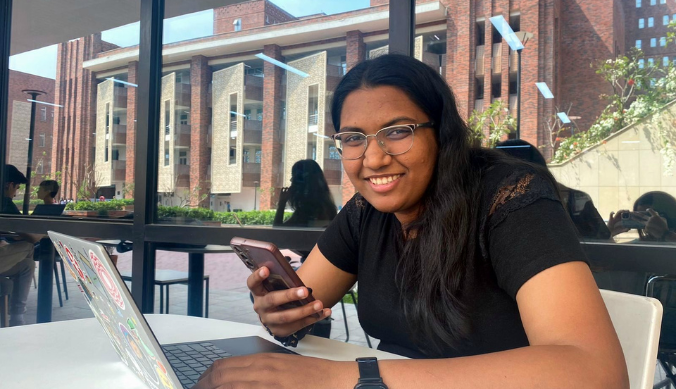Between Classes & Office Hours: Business Communication and Negotiation: Constructing, Deconstructing and Reconstructing Paradigms of Success
Prof. Asha Kaul is a veteran professor and a prolific author in the Communications area. While she already teaches Business Communication and Negotiation here at Ashoka, she wishes to demystify the subject for the wider ecosystem through this piece

Asha Kaul
19 December, 2022 | 6m readCommunication- formal and organizational – can be tough. You may have experienced it. In case not, let us imagine…The stage is set and you need to interact, engage and communicate for that elusive win. What do you do? How do you prepare? Do the following questions prop up in your mind – Where do I begin? What do I say? Will I be able to create the desired impact? Sometimes you have an answer to these questions and communication is a huge success but on other occasions, the outcome is not favourable.
Where did you go wrong? What did you say what should not have been said? What did you not say what was expected to have been said? You may reflect and analyse, try to change your communication and adopt an amicable stand if you have the time. But the moment has passed and there is a negative tick placed beside your name.
In the course on Business Communication and Negotiation, we understand varied situations, and look for tactics and strategies to counter negativity and imbue positivity. Through the sessions, we constantly construct, deconstruct and reconstruct communication in an attempt of redefining success paradigms.
Construction
This requires effort. Understanding the situation and the involved stakeholders(the audience), the interplay between the situation and the stakeholders, and the relationship shared by all concerned stakeholders is just the beginning point for constructing the dialogue. Comprehending existing processes of communication with a peep into our own barriers to communication is just the beginning point. Cognizing our strengths, and chasing and curating the areas of improvement provides each one of us a base to create our own edifice for communication. For some it is a strengthening of the existing processes, for others, it is an understanding of the outside world, the expectations and their own contributions in reaching the ‘win’ situation.
Clips featuring corporate leaders add to the fury of the discussion. Can ideas and emotions be reflected through verbal and non-verbal communication? If yes, what are the signs and signals to be cognized? How do all these signs and signals converge to yield single or multiple messages? The process more than the outcome becomes the central point of discussion.
By now, understanding the process of construction is over… what now?
Deconstruction
Take a long pause and a deep breath … have you considered the logic of the recipient? What appeals and what does not? Is the framing right, and the tone appropriate? How do you logically plug the audience requirements in the edifice you have created? Logic then becomes the pivot for analysis of such problem situations. In both, oral as well as written communication, content is broken up into smaller chunks for in-depth analysis and evaluation.
Now begins the more tedious part of understanding the audience, their expectations and subsequent recalibration. Listening with an objective to understanding the perspective of the audience, presenting with a focus on the stakeholders, negotiating to cooperate more than compete, building narratives to appeal to the sensibilities, persuading and influencing to change behaviour for compliance, facilitates the deconstruction of existing communication processes and procedures.
The scattered bits and pieces of the deconstructed processes now require to be assembled. Should the process be phased or simultaneous? What will emerge as the new picture?
Reconstruction
Simultaneous with deconstruction begins the process of reconstruction. All introspect and gather a list of unwanted pieces of baggage in the knapsack we have been carrying over the years. Some more introspection is required at this point. What should you throw out and what should you retain? It is a personal choice based on the nature of the desired reconstruction. Panel discussions with experts in the area of communication and entrepreneurship act as a beacon of light. Understanding the challenges faced by these experts, their failures and the success matrix facilitates in the creation of a career compass which guides us in the right direction.
An important part of the reconstruction phase is the creation of a signature voice, an understanding of the je ne sais quoi (don’t know what). Initially, it may be difficult for us to identify the unique selling proposition (USP) that each one of us possesses. Some introspection, some reflection and we begin inching closer to the identification of ourselves, discovering our signature voice. Communication, appearance and body language have all been discussed, but the gravitas is now discovered and matched with the leadership style that each one of us possesses but has so far not verbalized.
Though the course comes to a logical end, the process for the students does not! It is just the beginning of a long and arduous journey. Traversing the path with ease or difficulty is a must. Interestingly, the destination at the end of this journey is the same for all – success. All that is now needed is a proactive step and a long stretch to clasp that definitive handle-defined success.
Asha Kaul is a Visiting Faculty at the Centre for Entrepreneurship at Ashoka University and a Professor in the Communication Area at the Indian Institute of Management, Ahmedabad (IIMA).










